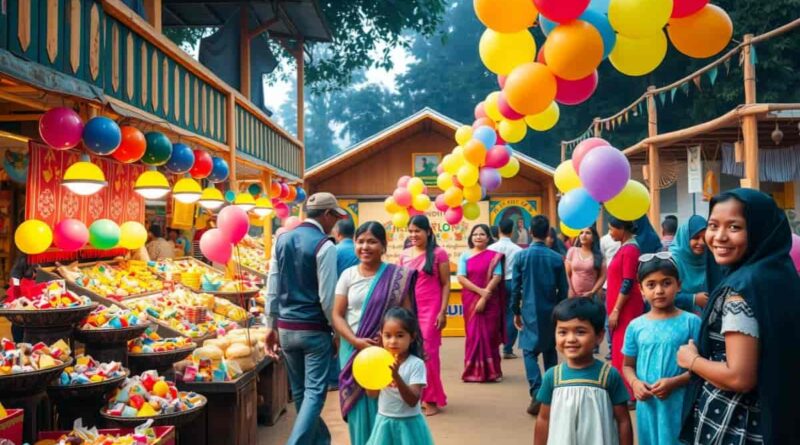A Village Fair Paragraph: Joy, Culture, & Traditions of Rural Life
A Village Fair: 200 Words
A village fair is one of the most colorful and joyful events in rural life. It usually takes place on special occasions such as religious festivals, harvest time, or traditional celebrations. Villagers, young and old, eagerly wait for the fair, as it brings happiness and togetherness. People often choose a large open field or the bank of a river as the fairground. They set up stalls with bamboo, wood, and colorful cloths, creating a festive atmosphere.
At a village fair, people sell and buy various goods such as household items, toys, earthen pots, wooden crafts, and clothes. Sweet shops and food stalls remain the center of attraction. Children enjoy buying balloons, flutes, and toys, while elders look for useful household products. Folk songs, puppet shows, and magic performances add charm to the fair. Traditional games like boat racing, kabaddi, and bullock cart racing are also arranged.
This is not only a place of entertainment but also a hub of culture and trade. It strengthens social bonding as people from different villages meet and share joy together. However, sometimes a lack of proper security and crowd control may cause accidents or pickpocketing. Despite these issues, a village fair represents the heart of rural life and its colorful traditions. It keeps alive the cultural heritage and provides villagers with moments of joy, unity, and celebration.
A Village Fair: 400 Words
A village fair is a traditional and vibrant gathering that reflects the culture and lifestyle of rural areas. It is usually organized during religious festivals, after the harvest season, or on special national days. For villagers, the fair is more than just entertainment; it is a celebration of unity, trade, and heritage. People from nearby villages also join, making the fair a lively event filled with joy and excitement.
The fairground often takes place in an open space such as the school field, near a riverbank, or under a big banyan tree. People decorate stalls and shops made of bamboo and cloth with colorful banners and lights. As soon as visitors enter the fair, they hear the sounds of traditional music, smell delicious food, and enjoy the laughter of children. The atmosphere becomes festive and energetic.
Different stalls sell toys, handicrafts, clay pots, wooden furniture, ornaments, and clothes. Sweet shops are especially popular, selling items like jilapi, chana murki, and cakes. Children run around excitedly with balloons, flutes, and spinning toys. Women often buy household items and traditional jewelry, while men look for farming tools and crafts. The fair also becomes a platform for local artisans and craftsmen to display their work and earn money.
Apart from shopping, entertainment plays a big role in village fairs. Folk songs, jatra (folk theatre), puppet shows, magic shows, and circus performances attract large crowds. Traditional games like kabaddi, wrestling, horse racing, and boat racing are organized, making the fair even more exciting. These activities not only entertain but also preserve the cultural heritage of rural society.
However, a village fair also has some drawbacks. Due to large gatherings, there is a risk of accidents, pickpocketing, or a lack of proper sanitation. Sometimes quarrels break out among visitors. To make fairs safer and more enjoyable, proper security measures and health facilities should be arranged.
Despite these challenges, it remains a symbol of rural tradition and togetherness. It brings happiness to people’s lives, strengthens social bonds, and promotes local culture. In today’s busy modern world, village fairs remind us of the simplicity and beauty of rural life.
Village Fair FAQ
A village fair is a traditional gathering in rural areas where people buy and sell goods, enjoy cultural programs, and celebrate together.
A village fair is important because it strengthens community bonding, promotes local trade, and preserves cultural traditions.
At a village fair, we can see stalls selling toys, sweets, handicrafts, folk songs, games, puppet shows, and traditional performances.
The main disadvantages include a lack of security, risk of accidents, pickpocketing, and sanitation problems.




